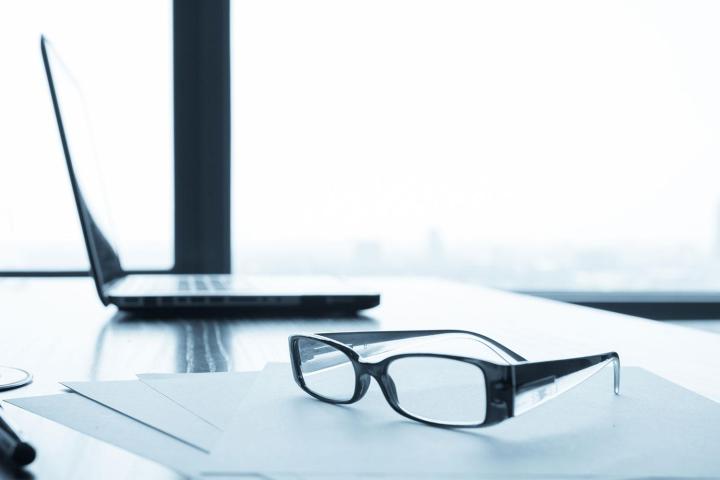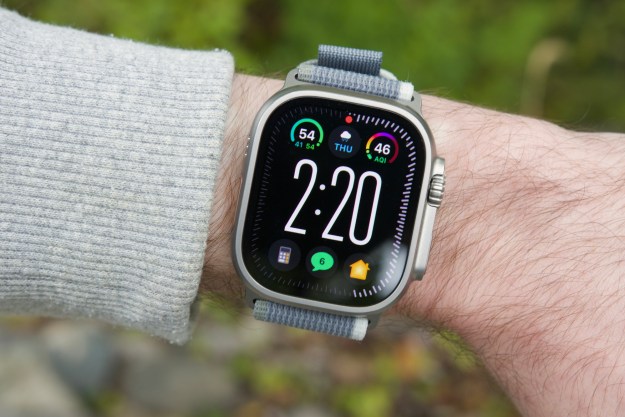
“No one knows for sure at this point if prolonged use of digital devices actually causes permanent damage to the eyes,” explained Gary Heiting, OD, senior editor of AllAboutVision.com, “but it’s well established that it causes eye strain and discomfort.”
Digital eye strain, sometimes referred to as computer vision syndrome, is well documented. If you’ve ever experienced dry or irritable eyes, blurred vision, eye fatigue, or head, neck and back pain after using a computer or smartphone, then you’re familiar with it.
A 2015 report from The Vision Council, Hindsight Is 20/20/20: Protect Your Eyes from Digital Devices, found that 61 percent of Americans have experienced eye strain after prolonged use of electronic devices — nearly 2 out of every 3 people. Long-term damage or not, we have an outbreak of eye strain on our hands.
What about long-term damage?
Because they emit HEV light (also called blue light), staring at phone and tablet screens may actually harm our eyes permanently. HEV light is that portion of the visible light spectrum that comprises light with the shortest wavelengths, which carry the greatest potential to damage living tissue.
We’re spending almost as much time staring at screens as we do sleeping.
“Many eye care providers are concerned about the potentially damaging effects of high-energy visible (HEV) light emitted by digital devices because laboratory and animal studies have shown exposure to high levels of HEV light can damage tissue in the retina of the eye in a way that appears consistent with retinal changes associated with macular degeneration, a leading cause of permanent vision loss in older adults.” says Dr. Heiting. “But no one knows for sure at this point if prolonged use of digital devices causes sufficient exposure to HEV light to cause permanent eye damage.”
Blue (HEV) light is also emitted by the sun and LED light bulbs, but most of us don’t stare at them for hours on end.
Was Mom right about not sitting so close to the TV?
You don’t need to worry about going cross-eyed, but your mom may have had a point about sitting too close to the TV. It may actually harm your eyes. Proximity is definitely a factor in eye strain and HEV light exposure.
“The amount of HEV light exposure a person receives depends on many factors, including screen technology, screen size, screen brightness, distance from the screen to the user’s face, and duration of use.” Dr. Heiting explains. “Even though smartphones have small screens, they potentially could cause greater cumulative HEV light exposure than a large-screen TV.”
Part of the problem is that we tend to open our eyelids wider and blink less frequently when we’re staring at screens. Fatigue kicks in because we’re focusing on a screen at a fixed distance for a prolonged period without looking away.
How much time do we actually spend on screens?
Mary Meeker’s Internet Trends 2014 report found that the average American (aged 16-44) spends 444 minutes or 7.4 hours staring at screens every day. That’s 147 minutes of television, 103 minutes on a computer, 151 minutes with smartphones, and 43 minutes on a tablet.
We’re spending almost as much time staring at screens as we do sleeping, the Bureau of Labor Statistics puts the average night’s sleep for an American (aged 25-54) at 7.7 hours.
Many of us, especially those who work on a computer all day, spend most of our waking lives staring at screens. The Vision Council report reveals that a third of adults spend more than 9 hours every day on digital devices, but there are clear generational differences:
Percentage of population that spends more than 9 hours a day on devices:
- 26 percent of Baby Boomers, born between 1946 and 1964
- 32 percent of Gen Xers, born between 1965 and 1980
- 37.4 percent of Millennials, born between 1981 and 1996
It should come as no surprise then that digital eye strain is on the rise.
All this extra screen time is also part of a shifting trend toward close-up work that’s thought to contribute to rising levels of myopia or nearsightedness. Apparently the condition is reaching epidemic levels worldwide. The National Eye Institute reports 34 million Americans suffer from myopia right now and projects that figure will hit nearly 40 million by 2030.
What can you do to protect yourself?
We may still be in the dark about the long term effects of HEV exposure, but there’s no doubt about prolonged screen time causing eye strain. We asked Dr. Heiting for some advice and this is what he recommends:
- 1. Maintain a comfortable working distance at the computer (close to arm’s length from the screen) and avoid hunching closer and closer.
- 2. When using a phone keep the screen as far away from your eyes as comfortably possible — the greater the distance your phone is from your eye, the less eye strain it is likely to cause — provided the print size and images are large enough for comfortable viewing.
- 3. Every 20 minutes, take a 20-second break and look off into the distance — at something 20 feet away. This is called the “20-20-20 rule” by many eye care providers, and it relaxes the focusing muscle inside the eye, relaxes the muscles outside the eyes that converge the eyes (points them inward to stay aligned on near objects), and stimulates blinking to remoisten the surface of the eyes — all comforting things!
- 4. Get an eye exam. Even minor problems with your eyesight can increase your risk for digital eye strain. Also, ask your eye care professional about the best type of glasses for your digital viewing needs. You might benefit from eyewear specifically prescribed for computer or other digital device use.
- 5. Ask your eye care provider about glasses that block blue light. There are a number of brands of eyeglass lenses and coatings that can reduce your exposure to HEV light when using digital devices.
- 6. Make sure your eyeglass lenses (if you need them) have an anti-reflective (AR) coating. Eliminating reflections from your lenses can increase viewing comfort and reduce eye strain.
- 7. Go outside and play more!
If you want to read more about digital eye strain then check out the CVS section at AllAboutVision. We’re off outside to stare at distant trees for a while — see you out there.



